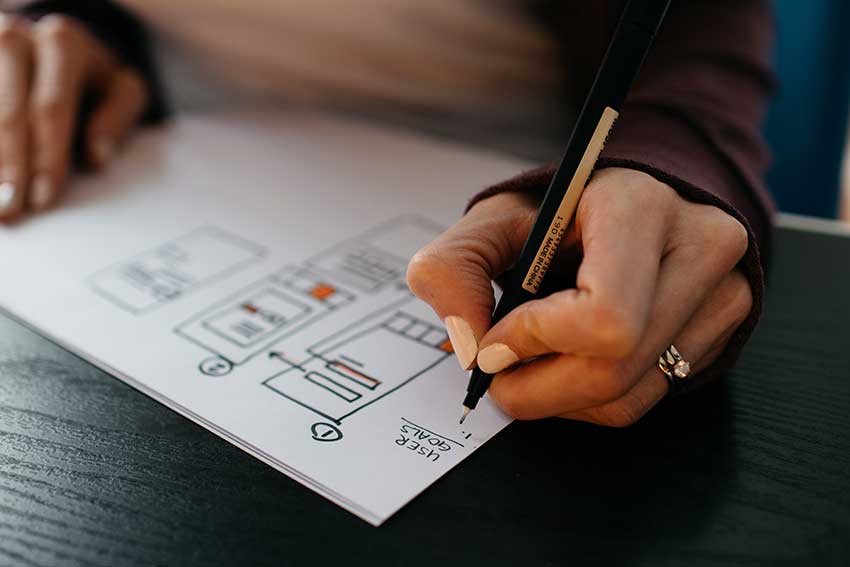Show:
Adapting The Role of UX Designers to Changing User Needs
User experience (UX) designers play a critical role in crafting digital products that meet the needs and expectations of users. However, as technology rapidly evolves and user preferences shift, UX designers must adapt their approach to ensure their designs remain relevant and effective.

This article explores the importance of adapting the role of the designer from a UX design agency for hire in response to changing user needs. It also highlights key areas where designers can focus their efforts, such as personalization, accessibility, and emerging technologies, to create meaningful user experiences in the ever-changing digital landscape.
Evolving User Needs and Expectations
In today’s fast-paced digital world, user needs and expectations constantly evolve. Users seek seamless experiences that anticipate their desires, cater to their individual preferences, and solve their problems.
If you hire UX designers, they must stay attuned to these changing needs to ensure their designs align with user expectations. One aspect that requires attention is personalization.
Users increasingly expect tailored experiences that reflect their unique preferences and interests.
Those who hire UX designers can employ techniques like user research, data analysis, and personalization algorithms to create customized interfaces that adapt to individual users. By focusing on personalization, designers can enhance user satisfaction and engagement.
Accessibility and Inclusive Design
Another crucial aspect of adapting to changing user needs is prioritizing accessibility and inclusive design. Designing for users with disabilities is a moral imperative and makes good business sense.
If you opt to hire UX designers, they should consider diverse user abilities while creating digital experiences, including:
- Visual
- Auditory
- Motor
- Cognitive impairments
Implementing inclusive design principles ensures that products are accessible to a wider audience.
Techniques such as using alternative text for images, providing keyboard navigation options, and offering adjustable font sizes can greatly enhance the user experience for people with disabilities.
By making accessibility a priority, UX designers can create inclusive digital experiences that accommodate the needs of all users.
Embracing Emerging Technologies
Technological advancements introduce new opportunities and challenges for UX designers. Staying abreast of emerging technologies is crucial for understanding how they can be leveraged to improve the user experience.
Organizations that hire UX designers must consider how to integrate technologies into their designs, such as:
- Artificial Intelligence (AI)
- Virtual Reality (VR)
- Augmented Reality (AR)
- Voice interfaces
AI-powered chatbots, for instance, can enhance customer support experiences by providing real-time assistance.
VR and AR technologies can create immersive and interactive experiences that engage users in novel ways. Voice interfaces enable hands-free interaction, making products more accessible and convenient.
Moreover, by embracing emerging technologies, UX designers can create innovative, future-proof designs that align with changing user expectations.
However, it is important to balance incorporating new technologies and ensuring usability, as the complexity of new features can sometimes hinder the user experience.

Embracing Inclusive Design for Changing User Needs
Inclusive design has become an integral part of user experience (UX) design as the focus shifts toward creating digital products that cater to the diverse needs of all users.
Besides, adapting the role of UX designers to changing user needs requires a strong emphasis on inclusive design principles.
So, by considering the needs of users with disabilities and ensuring accessibility, UX designers can create usable and enjoyable experiences for everyone.
This section explores the importance of embracing inclusive design and highlights its impact on meeting users’ evolving needs in today’s digital landscape.
Ensuring Accessibility
One of the key aspects of inclusive design is ensuring accessibility. As mentioned, by considering users with disabilities, such as visual, auditory, motor, or cognitive impairments, UX designers can create interfaces that everyone uses.
This includes implementing features like alternative text for images, providing keyboard navigation options, and using clear and concise language.
Ensuring accessibility not only provides equal opportunities for individuals with disabilities but also benefits other users, such as those using mobile devices or operating in challenging environments.
Expanding User Reach
By embracing inclusive design, UX designers can expand their user reach and engage with a broader audience. Designing for diverse user needs opens up new market segments and enables products to resonate with a wider range of individuals.
Inclusive design not only caters to the needs of users with disabilities but also considers the preferences and requirements of different age groups, cultures, and backgrounds.
By considering the perspectives of various user segments, UX designers can create inclusive, relatable, and meaningful interfaces for a larger user base.
Enhancing User Experience
The inclusive design significantly impacts the overall user experience. When products are designed with accessibility in mind, they become more intuitive, usable, and efficient for all users.
By removing barriers and creating seamless interactions, inclusive design improves the usability and satisfaction of the entire user base.
Moreover, considering diverse user perspectives during the design process often leads to innovative solutions and unique experiences that delight users and differentiate products in the competitive market.
Conclusion
Adapting the role of UX designers to changing user needs is essential for creating digital products that remain relevant and valuable. So, by focusing on personalization, accessibility, and embracing emerging technologies, those who hire UX designers can deliver user experiences that align with evolving user expectations.

 Return to Previous Page
Return to Previous Page








